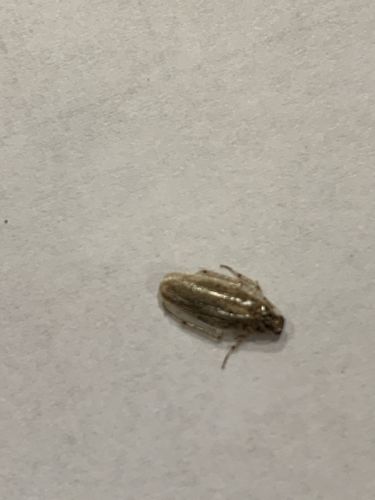Booklouse / Psocid
Scientific Name: Various species within the Order Psocoptera, e.g., Liposcelis spp. (common indoor booklice)
Order & Family: Order: Psocoptera; Families: Psocidae, Liposcelididae, etc. (There are many families within Psocoptera, and without closer inspection, it's difficult to pinpoint a single family from the image.)
Size: Typically 1-2 mm in length, though some can be up to 10 mm. The one in the image appears to be on the smaller side, consistent with indoor booklice.

Natural Habitat
Damp, humid, and often dark environments. Indoors, they are found in bathrooms, kitchens, basements, wall voids, and any area with high humidity, especially where mold might be growing. Outdoors, they can be found on bark, under leaves, and in bird nests.
Diet & Feeding
They feed on mold, fungi, dead insects, starch, glue, flour, and other organic matter. In homes, they are attracted to bookbindings, wallpaper paste, cereal products, and other household items containing starch.
Behavior Patterns
Psocids are often found in damp, dark, undisturbed areas. They are fast-moving when disturbed, and some species are capable of short flights. They are typically nocturnal and reproduce rapidly under favorable conditions (high humidity, ample food).
Risks & Benefits
Risks: Primarily a nuisance pest; they do not bite humans, transmit diseases, or cause structural damage. However, large infestations can contaminate food products and damage books or other paper goods. Benefits: They are part of the natural breakdown of organic matter in outdoor environments, contributing to decomposition.
Identified on: 8/26/2025